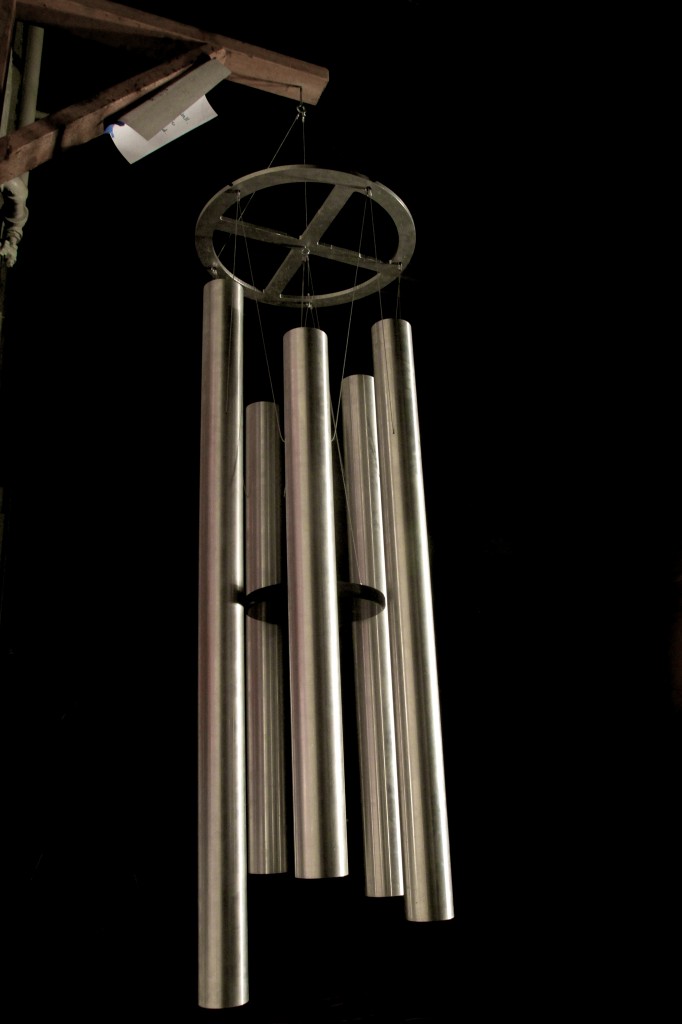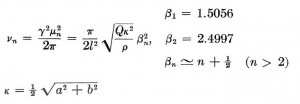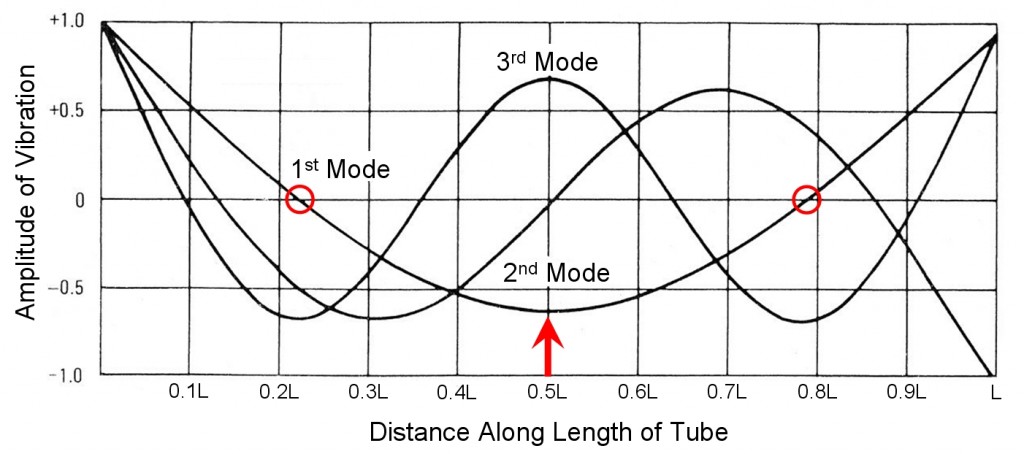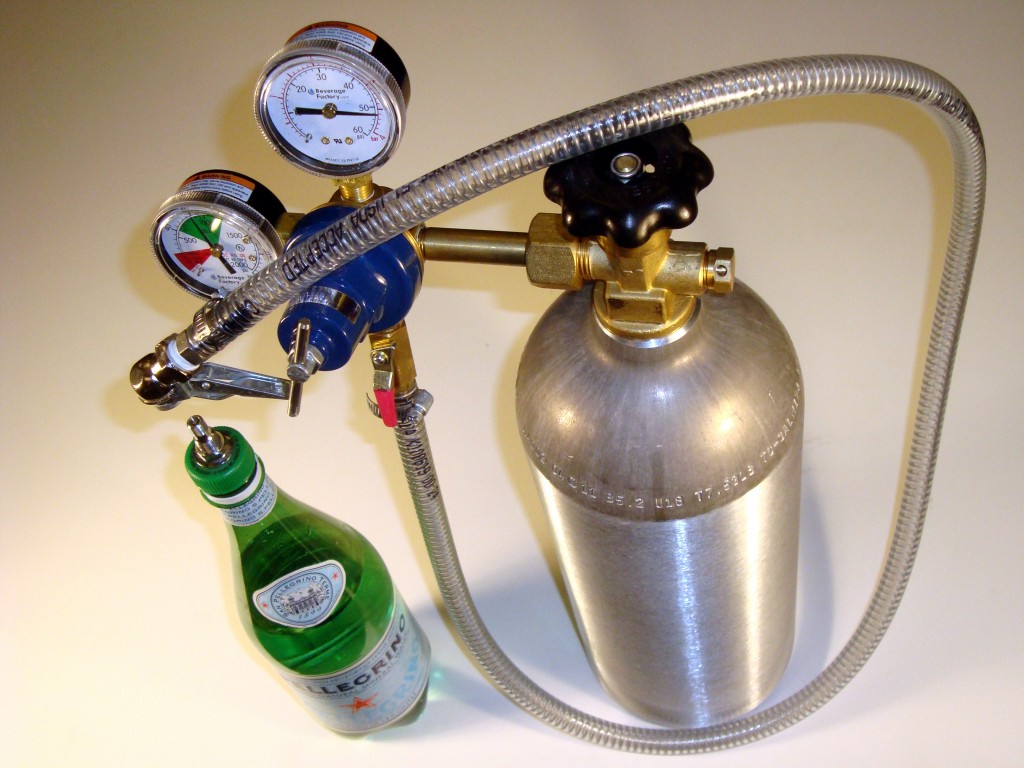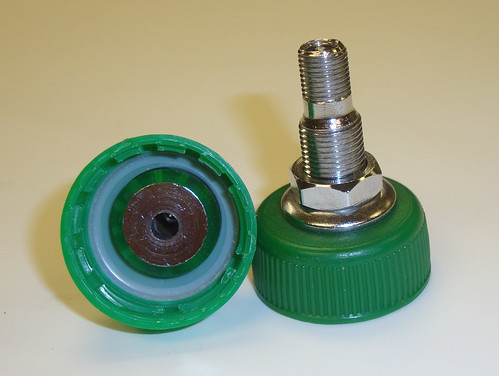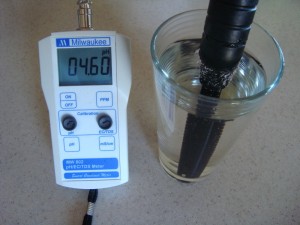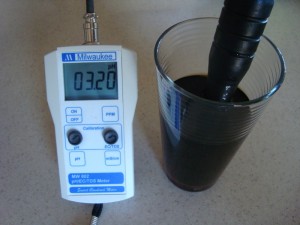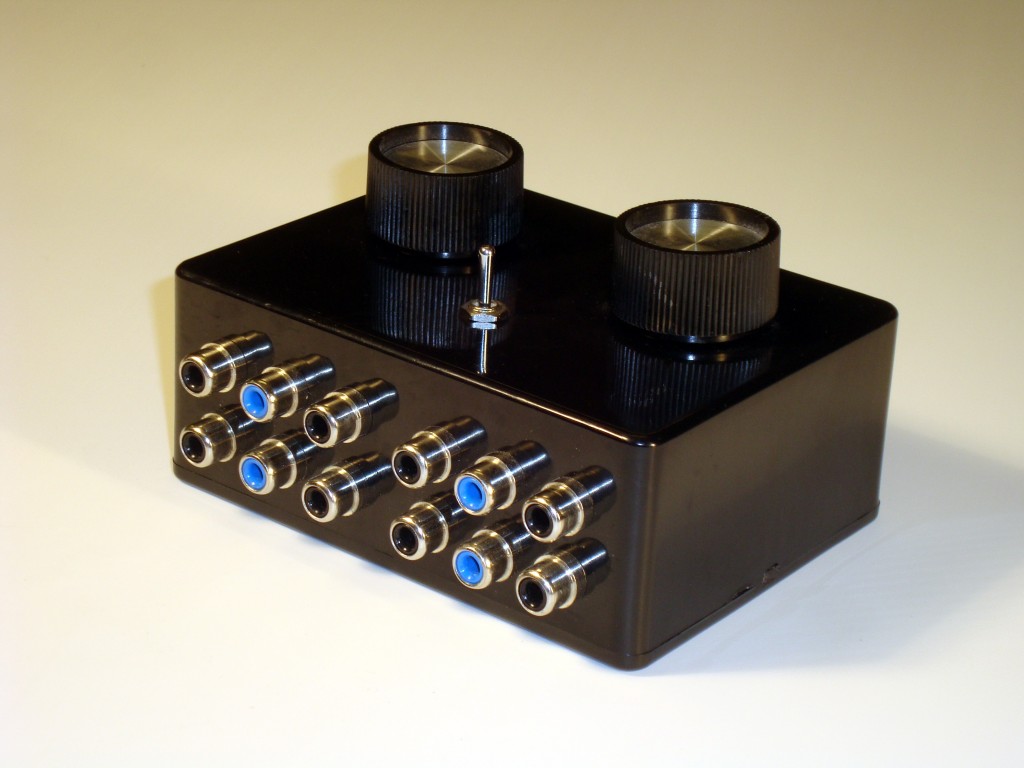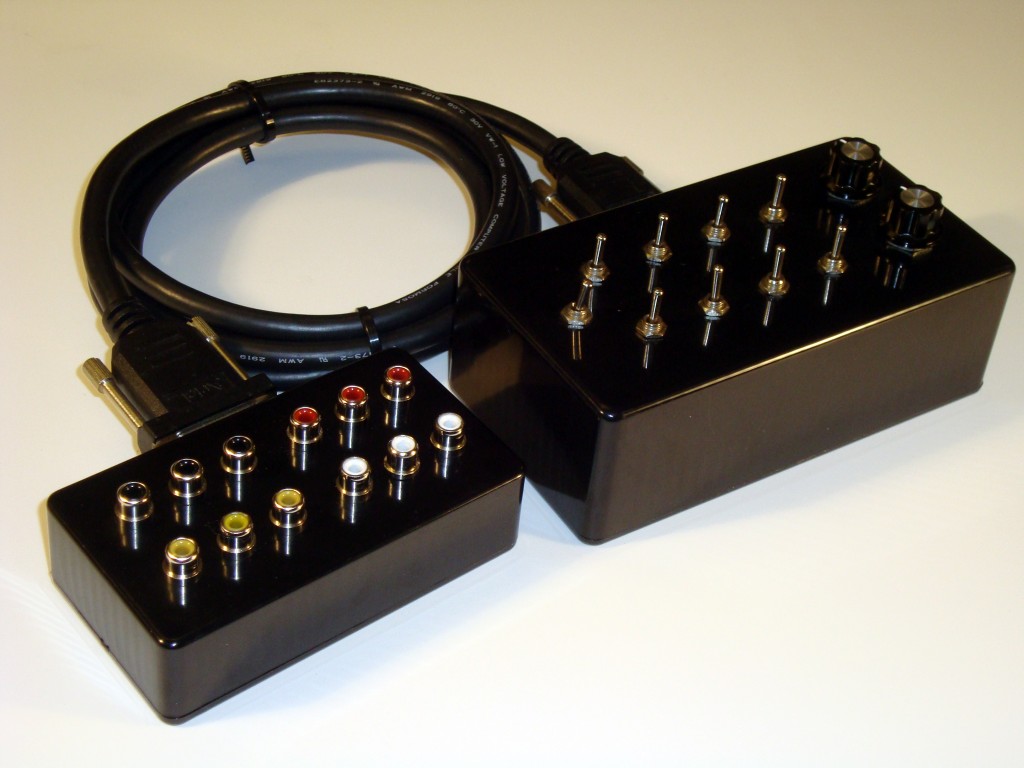A while back I bought five 4.5 foot long aluminum tubes because the price was so low that I couldn’t resist. They are 3.25 inches in (outer) diameter, and have a wall thickness of 0.1 inches. Recently, I decided to make them into the longest and loudest wind chimes I’ve ever heard. The longest tube rings for over a minute after being struck by the clapper. After thinking for a while about which notes I should tune the tubes to, I found that fairly large chimes are commercially available, but they are tuned to happy, consonant intervals. I consulted a few musically savvy friends (Thanks Brian and Andrew!) to gather some more ideas for interesting intervals on my chosen theme of “Evil & Ominous.” I ended up with quite a few ideas, and with Andrew’s help, I sampled the sound of the longest tube being struck, and recorded mp3’s of each set of notes to simulate the sound of the chimes ringing in the wind. I ended up with something delightful: D4, G#4, A4, C#5 and D5 (which are 294 Hz, 415 Hz, 440 Hz, 554 Hz, and 587 Hz). That’s right, there are two consonant intervals (octave and major 5th), but look at all those minor seconds and tritones: Delightfully Ominous!
Then the science started: How to determine the tube lengths to achieve the desired notes? How to suspend the chimes so they sound the best, and are the loudest? Where should the clapper strike the chimes in order to produce the loudest sound or the best timbre?
Wind chimes radiate sound because they vibrate transversely like a guitar string, not because they support an internal acoustic standing wave like an organ pipe. Pages 152 & 162 of Philip Morse’s book “Vibration and Sound” show that the natural frequencies, v, of hanging tubes are given by the following expression:
Pretty simple, right? One only needs to know rho and Q, the density and Young’s modulus of aluminum, l, the length of the tube, a & b, the inner and outer radius of the tube, and the beta of each tube mode of interest. Don’t worry though, there is a simpler way. If all of the tubes have identical diameter and are made of the same material (6061-T6 Aluminum!), the equation indicates that the natural frequency of a hanging tube scales very simply as the inverse of the tube length squared.
Using the above relationship (frequency ~ 1/(length*length)) to compute the ratios of tube lengths based on the ratio of frequencies produces:
Length of D4 tube = 1.000 * Length of D4 tube
Length of G#4 tube = 0.841 * Length of D4 tube
Length of A4 tube = 0.817 * Length of D4 tube
Length of C#5 tube = 0.728 * Length of D4 tube
Length of D5 tube = 0.707 * Length of D4 tube
The longest tube is 133.1 cm (52.40 inches) long, so all the tubes were scaled relative to it. Note that the frequencies are slightly different than the notes I was aiming for, but absolute pitch is only a requirement when playing with other instruments.
~D4 = 293.66 Hz = 133.1 cm = 280.3 Hz
~G#4 = 415.3 Hz = 111.9 cm = 396.4 Hz
~A4 = 440.0 Hz = 108.7 cm = 420.0 Hz
~C#5 = 554.37 Hz = 96.9 cm = 529.1 Hz
~D5 = 587.33 Hz = 94.1 cm = 560.6 Hz
How accurately do these tubes need to be cut? For example, how important is it to cut the tube length to within 1 mm? This can be calculated simply, using the above equation. A length of 108.7cm gives 420.0 Hz, whereas a length of 108.8cm gives 419.23 Hz. This spread is 0.67 Hz, which is a fairly small number, but these small intervals are often expressed in cents, or hundredths of a half-step. This 1 mm length error gives a frequency shift of 31cents. Does this matter? Well, the difference in pitch of a major third in just and standard tuning is 14 cents, which is definitely noticeable. It is preferable to be somewhat closer than this 1mm, or 2/3 Hz to the target interval.
The tubes were rough-cut to 2 mm longer than the desired length on a bandsaw to allow the ends to be squared up in case the cut was slightly crooked. The resonance frequency was then measured by playing the desired frequency from a speaker driven by a sine wave generator with a digital display. I then struck the tube and listened for (and counted) the beats. If two beats per second are heard, the frequency of the tube is 2 Hz different than the frequency played through the speaker. With this method using minimal equipment, I quickly experimentally measured the resonance frequency to less than 0.5 Hz (one beat every two seconds), which is ~10 cents. I then fine tuned the tube length using a belt sander, and measured the resonance frequency several times while achieving the correct length. In reality though, if I missed my target lengths I’d only be adding a little more beating and dissonance, which might have only added to the overall ominous timbre.
How to suspend the tubes? Looking at the mode shapes of the tube for guidance, I suspended the tubes by drilling a hole through the tube at one of its vibrational nodes, and running a plated steel cable through it. Check out the plot below from Blevins’ New York Times Bestselling book “Formulas for Natural Frequency and Mode Shape.”
This plot shows a snapshot of the tube’s deflection as a function of position along the tube. Imagine that the left side of the tube is at 0, and the right side of the tube is at L. This plot shows the first three mode shapes of a “straight slender free-free beam,” which my 1.33 meter long, 83mm diameter tube qualifies as. Just like a guitar string, this tube has multiple overtones (higher modes, or harmonics) that can be excited to varying degree depending where the clapper strikes the tube. The guitar analog of this is the timbre difference one hears when picking (striking) the string closer to or further from the end of the string (the bridge). This plot also shows where the tube should be suspended – from the locations where the tube has no motion in its first, fundamental mode. Those two places, a distance of 0.221L from the tube’s ends, are circled in red. When striking the tube suspended from either of these locations, the tube rings the loudest and for the longest time duration (as compared with any other suspension location). Similarly, when striking the tube in the location noted by the red arrow (the midpoint of the tube), the tube rings the loudest. I won’t get into more math and fancy terms like “modal participation factor,” but it is true that suspending the tube from the circled red locations also results in the lack of excitation of the third mode (which has a motional maximum at this location). Similarly, striking the tube at its midpoint results in the lack of excitation of the second mode, due to its motional minimum at this location.
Thanks to David for the Ominous Photo. An Ominous Chime video will soon follow.
